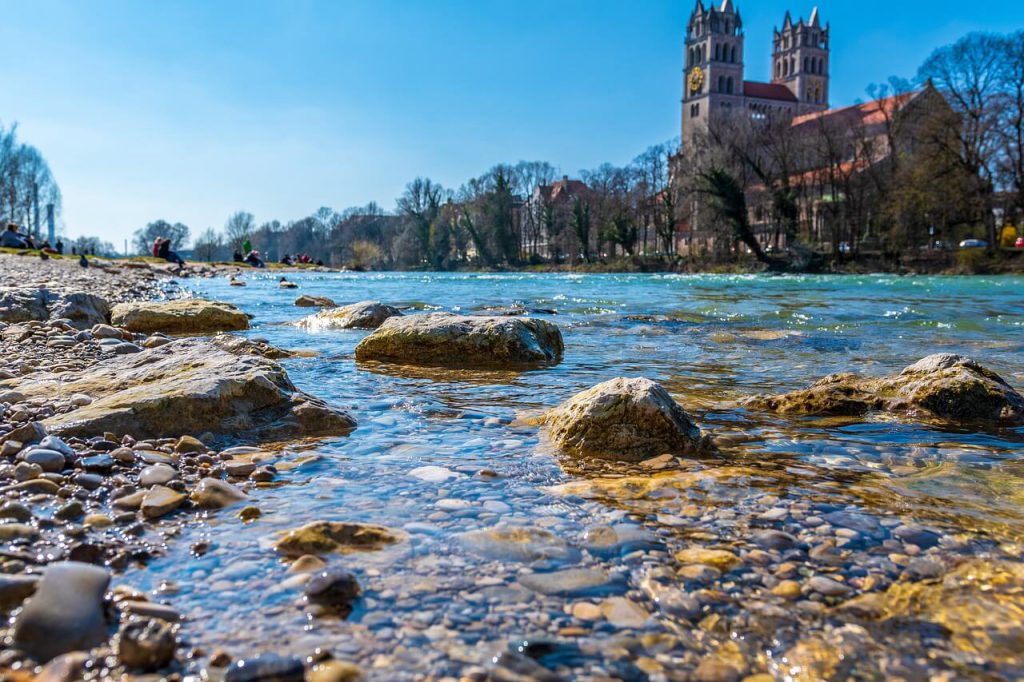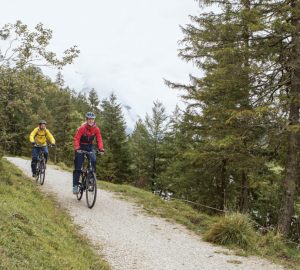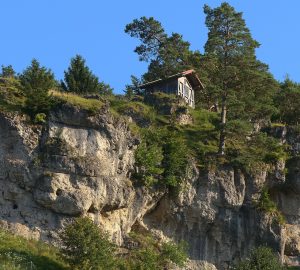Due to strict travel regulations during the Corona pandemic, many people have been looking for alternative recreation options in their local area. For us at Tatonka, that’s the state of Bavaria. To make sure we get enough fresh air during our vacation at home, we’ve taken a look at the region’s bike trails and put together three ideas for you.
Why travel far when good things are so close? Many travelers followed this motto during the pandemic. But what made sense during the pandemic with its travel restrictions naturally also applies even if long-distance travel is possible again. Instead of six weeks in Japan or a Kilimanjaro climb, topics such as circumnavigating the Wetterstein, the Black Forest and finally going to Heidelberg are in greater demand than ever before.
The advantage: Finally you have a good opportunity to discover Germany! There are very good reasons why hordes of international tourists come to us every year to see the areas we are so familiar with. Germany is bursting with historical sites, enchanting nature and exciting cultural events.
A particularly nice way to discover your homeland is by bike. If you like to hike, you know that walking is the most intense way to experience your surroundings, but you don’t get very far. This is different with the bike: here, on a distance of 50-80 kilometers, the entire environment can change, while you are in the fresh air and in motion all day.
In this article, we will introduce you to three cycling routes in Bavaria that are ideal for beginners, but also have a lot to offer for experienced long-distance cyclists.
Reading tip: Cycling Trails Germany – 4 Exciting biking trails
Isar Cycle Path
From its source in the Tyrolean Alps to the mouth of the Danube, the Isar Cycle Path runs 299 kilometers through a total of eight beautiful regions in Bavaria (and Tyrol). The list of regions you cycle through reads like a must-see list for Upper and Lower Bavaria: the wild beauty of the Karwendel Mountains, the Sylvenstein Reservoir and the Tölzer Land, Schäftlarn, Munich, Freising, Landshut, the Niederviehbach Monastery and, as a crowning finale, the mouth of the Danube in the Deggendorfer Land. The bike path is never too demanding: you ride either on gravel paths or on asphalt. In total, you will climb about 1,500 meters in altitude, but also 2,030 meters downhill.
You can spend the night in the numerous villages through which the Isar Cycle Path leads you – whether in a tent or in a guesthouse is up to you.

Altmühltal Cycle Route
The Altmühltal Cycle Path also follows a river, the Altmühl. The river is beautiful, but in comparison to the landscape it is almost a minor matter: steeply towering Jura rocks line the valley on both sides, you cross postcard-idyllic green meadows and with the Limes you can even explore an ancient UNESCO World Heritage Site.
You have to cycle a total of 166 kilometers from Gunzenhausen to the mouth of the Danube at Kelheim – and always on well-maintained gravel or asphalt paths. If you wish, you can extend the tour either by starting in the medieval Rothenburg ob der Tauber or by following the Danube Cycle Path directly. In this way, the Altmühltal Cycle Path becomes a wonderful stage on a larger cycling tour, which in extreme cases can take you as far as Sofia in Bulgaria.
The Altmühltal region is well prepared for tourism and offers numerous overnight accommodations, inns and train stations along the way.

Danube Cycle Path
The Danube Cycle Path is a pan-European long-distance cycle path. Theoretically, you can follow the cycle path from the Black Forest to Bulgaria and cross ten(!) countries along the way. This almost 3,000 kilometer long journey is one of the great longing journeys of all long-distance cyclists – how convenient that it starts in Germany!
You don’t have to leave everything behind for months and move through Eastern Europe: The section from Ulm to Ingolstadt to Regensburg is eventful enough (alternatively, the section between Passau and Vienna is also very popular, but in this post we want to give you tips for Bavaria). All cities on this section have historic town centers, Regensburg is even a UNESCO World Heritage Site. You’ll also pass the Danube breakthrough with the Weltenburg monastery, whose beer brewing skills you should definitely experience for yourself. In between, you’ll cycle through typical Bavarian landscapes – green, idyllic, wonderful.

The Danube Cycle Path in Bavaria has a length of just under 400 kilometers, measured from Ulm to Passau. The stages between the individual cultural highlights of the Danube cities are made for a cycling tour without a lot of luggage: You can actually spend the night in a guesthouse every night. Should you have more nature in mind, this is of course also possible with the many campsites along the cycle path.







